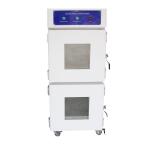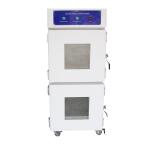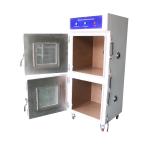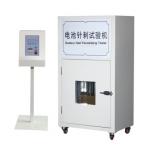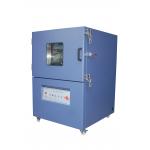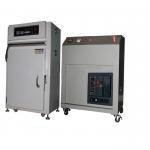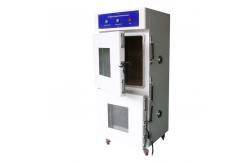In the era of automotive electrification, the performance and
safety of automotive batteries are of utmost importance. The Safety
Battery Explosion-proof Climatic Temperature Test Equipment for
Automotive Battery Testing is a crucial tool that enables
automotive manufacturers and battery suppliers to thoroughly
evaluate and enhance the quality and safety of their products. This specialized test equipment is designed to subject automotive
batteries to a wide range of climatic and temperature conditions in
a safe and explosion-proof environment. It serves as a vital asset
for automotive companies, battery manufacturers, research
institutions, and regulatory bodies. The primary objective is to
simulate the extreme environmental stresses that automotive
batteries may encounter during their lifespan, including
temperature fluctuations, humidity levels, and rapid changes in
climate. By doing so, it helps identify potential safety hazards,
such as thermal runaway or explosion risks, and allows for the
optimization of battery designs and manufacturing processes. This
ultimately ensures that automotive batteries meet the stringent
safety and performance standards required by the automotive
industry. - Robust and Automotive-Grade Construction
- The equipment is built with a heavy-duty framework, typically made
of high-strength alloy steel, to withstand the rigors of testing
automotive batteries. The exterior is designed to be
explosion-proof and fire-resistant, meeting the highest safety
standards. The interior chamber is lined with a refractory material
that can endure extreme temperatures and prevent the spread of
flames or hot gases in case of a battery malfunction. The door of
the chamber is engineered with a reliable locking mechanism and a
high-temperature-resistant gasket, ensuring an airtight and secure
seal. It also features a large viewing window made of tempered
glass with anti-flame and anti-shock properties, allowing for clear
visual monitoring of the testing process without compromising
safety.
- Precision Climatic and Temperature Control Systems
- Temperature Control: The temperature control system is highly
accurate, capable of maintaining a wide temperature range,
typically from -40°C to +120°C, with an accuracy of ±0.3°C. It
utilizes advanced refrigeration and heating technologies, along
with a sophisticated feedback loop and multiple temperature
sensors. This ensures uniform temperature distribution throughout
the chamber and minimal temperature fluctuations over time. The
control panel allows for easy programming and adjustment of
temperature settings, including the ability to create complex
temperature profiles with ramping and holding periods, simulating
real-world driving and charging scenarios.
- Humidity Control: The humidity control system is equally precise,
capable of achieving humidity levels from 10% to 95% RH (Relative
Humidity), with an accuracy of ±2% RH. It employs a combination of
humidifiers and dehumidifiers, along with a well-designed air
circulation system. The chamber is equipped with humidity sensors
that continuously monitor the internal humidity, and the control
system adjusts the humidification or dehumidification processes
accordingly. This allows for the creation of stable and dynamic
humidity environments, mimicking the diverse climates that
automotive batteries may face during transportation, storage, and
operation.
- Climatic Cycling: The equipment can perform precise climatic
cycling, transitioning between different temperature and humidity
conditions. For example, it can rapidly shift from a cold and dry
environment to a hot and humid one, simulating the rapid changes in
climate that a vehicle may experience when traveling between
different regions. The control panel enables users to define the
rate of change, the duration of each stage, and the number of
cycles, providing a highly customizable testing environment.
- Advanced Instrumentation and Data Acquisition
- The chamber is outfitted with a comprehensive suite of sensors.
Temperature sensors are strategically placed to monitor the
temperature at different locations within the chamber and on the
battery itself, ensuring that the samples experience the desired
temperature conditions uniformly. Humidity sensors are also
distributed to accurately measure the relative humidity. Pressure
sensors are installed to detect any abnormal pressure build-up
within the chamber, which could indicate a potential explosion.
Voltage and current sensors are used to track the electrical
behavior of the battery during the test, providing valuable
insights into its performance and potential short-circuit risks.
These sensors are connected to a state-of-the-art data acquisition
system that records and stores all the climatic, electrical, and
pressure data. The data can be accessed and analyzed in real-time
or retrieved later for in-depth studies. The data acquisition
system is highly flexible and can be integrated with automotive
battery-specific software and databases, facilitating seamless data
transfer and analysis. It can also be configured to send
notifications and reports automatically, saving time and effort for
the users. Additionally, the control panel includes built-in alarms
and safety features that alert users in case of any abnormal
temperature, humidity, pressure, voltage, or current readings, or
if the equipment malfunctions.
|
